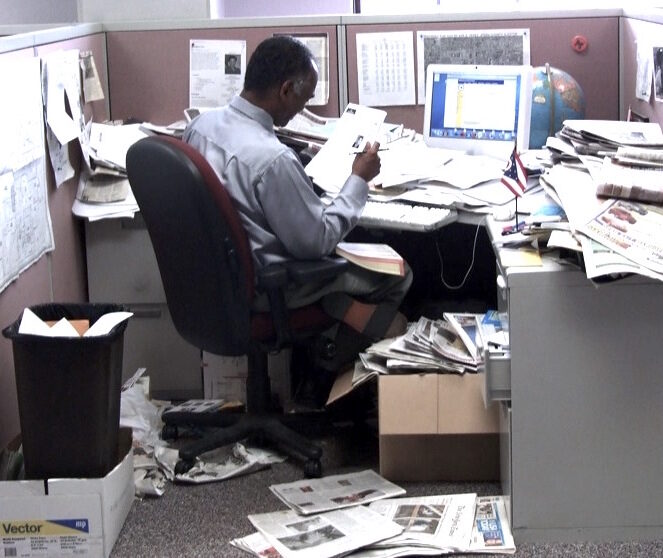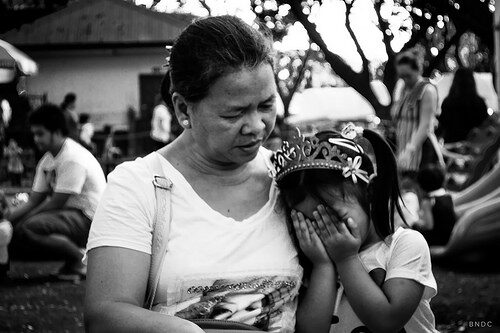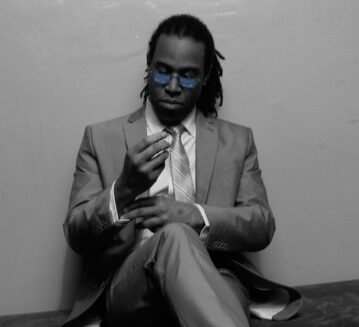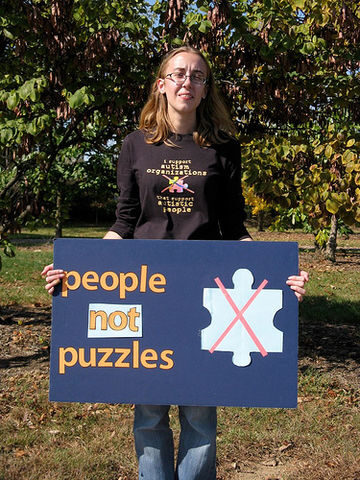Maxfield Sparrow unstrangemind.com Photo © *Hajee | Flickr/Creative Commons [image: Person with black hair and a blue coat. They are holding a hand-lettered cardboard sign over their face. Sign reads, “VERY HUNGRY PLEASE HELP!”] I am not the only Disabled person economically struggling, as disability and poverty go hand in hand. Why is that? The answer is complex, since disability leads to poverty and poverty leads to disability. It’s a vicious cycle and sometimes a downward spiral, leading people to lead lives perpetually circling the drain, always on the edge of annihilation. Let me see if I can untangle some of it for you. “You’re dooming yourself to a hand-to-mouth existence.” That’s what my parents told me when I dropped out of high school. And they were right. Well, they were half-right, anyway. I have spent the last three decades living hand to mouth, but it is not a fate…
Year: 2017
I consider my executive functioning difficulties one of the most disabling aspects of my being autistic. I’ve struggled with executive functioning since childhood, but I didn’t have the words to describe my experiences with it until I was an adult in my mid-twenties.
Sarah Pripas @SPripasKapit Non-autistic people are fascinated by autistic people’s relationships—romantic relationships especially. As an autistic woman who has been in a relationship with an autistic man for eleven years (six of these as a legally married couple), I know too well that autistic relationships are oftentimes perceived by non-autistics as inspirational at best, and freakish at worst. So it was with no small amount of trepidation that I began watching Dina, a documentary film about autistic couple Dina Bruno and Scott Levin, which opens October 6th. Yet despite my reservations, Dina turned out to be a thoroughly enjoyable take on autistic love. The movie’s opening seemed to confirm my worst fears. The film deliberately takes a minimalist approach as it follows Dina going about her life in Philadelphia. I couldn’t help but think to myself: Does the world really need this? I suppose some non-autistic people might be fascinated by…
Maxfield Sparrow unstrangemind.com Photo © Benedic Belen | Flickr/Creative Commons [Image: Black-and-white photo of an Asian woman comforting a small crying child who is wearing a tiara, and has their hands over their face.] The Thinking Person’s Guide to Autism asked Autistic adults to fill out a survey about death and dying to create a resource for people who need to explain death to Autistic children. The response was tremendous—in less than a week the survey had 50 responses, mostly from Autistic adults. What follows is a summary and analysis of the responses. We hope it is useful to you, your child, your family, your clients, and your students. Please note that some of the responses discuss difficult material, including suicide, and suicidal ideation/threats. Bullet Point Summary Autistic adults were surveyed about death and dying. Most learned about death through observation of people, animals, and plants. Learning about death was…
Maxfield Sparrow unstrangemind.com Freddie Highmore as “The Good Doctor” | photo via IMDB [image: Young white man with short dark hair and dark eyes, wearing a surgeon’s cap, with a surgical mask around his neck. Before last night, the only fictional Autistic surgeon I had seen on television was Dr. Virginia Dixon, the heart surgeon portrayed by Mary McDonnell, who appeared in three episodes of season five of ABC’s Grey’s Anatomy. As Lynne Soraya described Dr. Dixon, “the way the character was written was exploitative, unrealistic, over the top, and insulting.” I completely agree with Soraya’s assessment of Dr. Dixon. So it was with great trepidation that I sat down to watch the first episode of ABC’s new show, The Good Doctor, starring the perennially boyish Freddie Highmore as Dr. Shaun Murphy, a new resident at St. Bonaventure Hospital in San Jose, California. Despite my resistance, I did enjoy the…
TPGA editorial and support crew [image: Selfie of red-headed white woman and her handsome autistic teen son.] Welcome! Our team created Thinking Person’s Guide to Autism (TPGA) to be the autism guide that didn’t exist when our autistic kids were first diagnosed. You can rely on this website, our vibrant Facebook community, our Twitter feed, and our book for evidence-based, compassionate, and useful information and discussions from autistic people themselves, parents, and professionals. Here are some of the TPGA basics, if you’re new here. But please explore the hundreds of posts on our site, and our extensive Resources section, if what you’re looking for isn’t directly below. –Shannon Des Roches Rosa TPGA Senior Editor New Autism Diagnoses After a Child’s Autism Diagnosis: Next Steps Jean’s Adult Diagnosis Story Understanding Autism Welcome to the Autistic Community On Eye Contact How To Make Autistic Children’s Lives Easier On Autism, Aggression, and Self-Injury Autism…
Maxfield Sparrow unstrangemind.com Photo © Stephen Melkisethian | Flickr/Creative Commons [image: Black-and-white photo of disability rights protesters at the U.S. Capitol: some using wheelchairs, some not.] We educated our legislators. We wrote letters and made phone calls. We worked hard to get the message across, yet the House judiciary committee has chosen to take the next step to dismantle the Americans With Disabilities Act (ADA): H.R. 620 will go in front of the entire House of Representatives for a vote. We have no idea yet when that vote will be, so we need to renew our efforts to educate and persuade our lawmakers, so they will act to protect the ADA, and reject H.R. 620 and its agenda to confuse and limit the ADA. As I wrote back in May, “Unless we educate our legislators about the harm of notification bills like H.R. 620 and similar state-level legislation, the ADA Title…
The worst part of institutions is not physical violence, obvious forms of abuse or neglect. It’s not even the experiences you don’t get to have. It’s the damage that is done right down to your soul, by living under the power of other human beings. Glamour makes no difference. Prettiness makes no difference. Size makes no difference.
Music producer, actor, and writer Michael “Hot Mike” Buckholtz is also an advocate for autistic people, especially those who, like himself, are part of the Black/POC communities. We recently chatted with Mike via email about his background, some specific challenges (and deadly prejudices) Black autistic people face, and ways he thinks younger autistic people of color can empower themselves. You can follow Mike on Twitter at @OfficialHotMike. Mike Buckholtz [image: Black-and-white photo of Mike Buckholtz: a Black man wearing a silver suit, glasses with blue lenses, and pulled-back locs.] TPGA: Can you tell us a bit about your fabulous career in music and entertainment, and whether being autistic has been a factor? Mike Buckholtz: I started out as a Hip Hop music producer for MC Hammer beginning in 1989. Hammer and I met in 1984 in the U.S. NAVY as barracks roommates. MC made a fantastic statement about that time. (I’ll…
This study’s results suggest that if an organization wants to evoke negativity from the public, using puzzle pieces is the way to go. Puzzle pieces evoke negativity. However, if an organization wants to evoke positivity about autism, puzzle-piece imagery is probably not the way to go.








